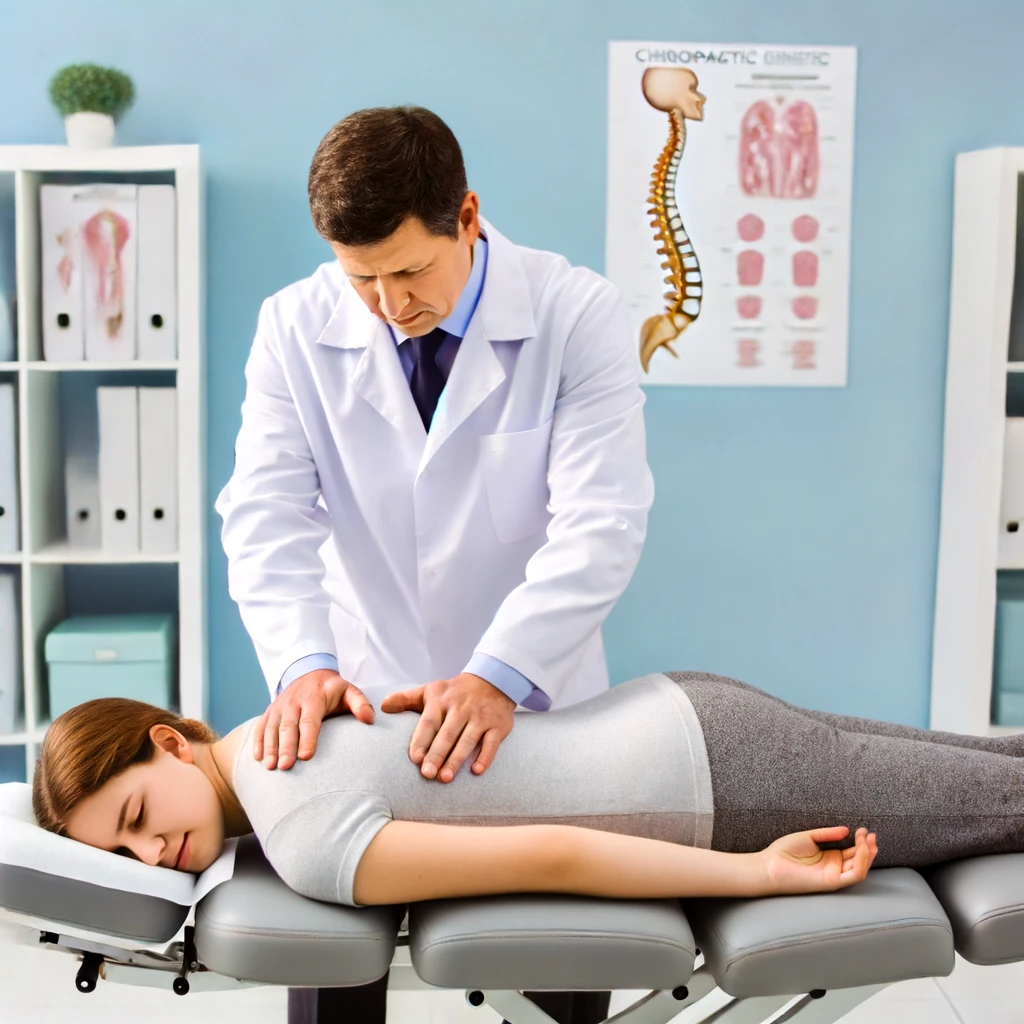Chiropractic adjustments can provide significant relief from various musculoskeletal issues. However, it’s common to experience some discomfort or pain following an adjustment as your body adjusts to the changes. Here is an in-depth article on how to relieve pain after chiropractic adjustment.
How to Relieve Pain After Chiropractic Adjustment
Home Remedies
Home remedies can effectively manage pain and discomfort following a chiropractic adjustment. Here are some tried-and-true methods.
Ice Therapy
Applying ice packs to the affected area can help reduce inflammation and numb the pain. Use an ice pack for 15-20 minutes every few hours during the first 48 hours following an adjustment. This method is particularly effective for acute pain and swelling. Ensure that the ice pack is wrapped in a cloth to avoid direct contact with the skin, which can cause frostbite.
Heat Therapy
Heat therapy can be beneficial after the initial inflammation has subsided (usually after 48 hours). Using heating pads helps relax muscles and improve blood circulation, which promotes healing and reduces pain. Apply heat for 15-20 minutes as needed. Heat therapy is especially effective for chronic pain and muscle tightness, but it’s important not to use it on areas that are still inflamed.
Epsom Salt Baths
Taking warm baths with Epsom salt can soothe sore muscles and provide relaxation. The magnesium in Epsom salt helps reduce muscle tension and pain. Soak in a warm bath for about 20 minutes to experience the benefits. Adding a few drops of essential oils like lavender can enhance the soothing effects. This method not only alleviates pain but also helps to detoxify the body and reduce stress.
Medication Options
Sometimes, over-the-counter or prescription medications can be necessary to manage pain effectively after a chiropractic adjustment.
Over-the-Counter Pain Relievers
Medications like ibuprofen or acetaminophen are effective for managing pain and reducing inflammation. These can be taken as directed on the packaging to help alleviate post-adjustment discomfort. Ibuprofen is particularly useful for reducing inflammation, while acetaminophen is effective for pain relief without the anti-inflammatory effects.

Topical Analgesics
Topical creams and gels that contain pain-relieving ingredients such as menthol or capsaicin can provide localized pain relief. Apply these products to the affected area as directed for temporary relief from soreness. These analgesics work by desensitizing the nerve endings and increasing blood flow to the area, which helps to alleviate pain.
Prescription Medications
For more severe pain, consulting a doctor for prescription medications might be necessary. Your healthcare provider can recommend stronger pain relief options tailored to your needs. Prescription medications can include muscle relaxants, stronger anti-inflammatories, or even short-term use of opioids. Always follow the doctor’s instructions carefully to avoid side effects and dependency.
Physical Activities
Engaging in light physical activities can help manage and reduce pain after a chiropractic adjustment.
Stretching Exercises
Gentle stretching exercises can help improve flexibility and reduce muscle tension. Stretching should be done slowly and carefully to avoid overexertion. Focus on areas that feel tight or sore to promote relaxation and mobility. Regular stretching can help maintain the adjustments made by the chiropractor and prevent stiffness.
Walking
Light walking is an excellent way to promote circulation and reduce stiffness. It’s important to stay active without putting too much strain on your body. Aim for short, frequent walks throughout the day. Walking helps to keep your muscles engaged and promotes a healthy range of motion in your joints.
Yoga
Practicing yoga can offer gentle movement and relaxation. Yoga helps maintain mobility and can reduce pain through various stretches and poses. Choose restorative or gentle yoga styles that focus on slow, controlled movements. Yoga also helps in reducing stress, which can often exacerbate pain.
Dietary Adjustments
Diet plays a crucial role in managing pain and promoting overall health after a chiropractic adjustment.
Anti-Inflammatory Foods
Consuming foods rich in omega-3 fatty acids, antioxidants, and vitamins can help reduce inflammation and support overall health. Foods like salmon, walnuts, berries, and leafy greens are excellent choices. These foods help to modulate the body’s inflammatory response and can accelerate the healing process.

Hydration
Drinking plenty of water is essential for staying hydrated and helping flush out toxins. Proper hydration supports healthy muscle function and can reduce soreness. Aim to drink at least eight glasses of water a day, and more if you’re physically active or in a hot climate.
Balanced Diet
Maintaining a balanced diet with a good mix of proteins, carbohydrates, and fats is crucial for overall health. Proper nutrition supports your body’s healing processes and helps manage pain. Ensure your diet includes a variety of fruits, vegetables, whole grains, lean proteins, and healthy fats to provide the necessary nutrients for recovery.
Alternative Therapies
Incorporating alternative therapies can enhance pain relief and overall well-being after a chiropractic adjustment.
Acupuncture
Acupuncture involves using needles to target specific points on the body to relieve pain. This traditional Chinese medicine technique can help reduce discomfort and promote healing. It is believed to stimulate the nervous system and release chemicals that either change the experience of pain or trigger the release of other chemicals and hormones which influence the body’s self-regulating systems.

Massage Therapy
Massage therapy helps relax muscles, improve circulation, and alleviate pain. A professional massage can target specific areas of discomfort, providing significant relief. Techniques such as deep tissue massage, Swedish massage, and trigger point therapy can be particularly effective in relieving post-adjustment pain.
Aromatherapy
Using essential oils through aromatherapy can promote relaxation and pain relief. Oils like lavender, peppermint, and eucalyptus have calming and analgesic properties that can help manage post-adjustment pain. Aromatherapy can be used in diffusers, applied directly to the skin with carrier oils, or added to baths to enhance relaxation and pain relief.
Professional Guidance
Following professional guidance ensures proper care and recovery after a chiropractic adjustment.
Follow-Up Appointments
Scheduling follow-up visits with your chiropractor is essential for ongoing care. These appointments allow your chiropractor to monitor your progress and make necessary adjustments to your treatment plan. Regular follow-ups ensure that your treatment is on track and can help in making any needed modifications to your care plan.
Physical Therapy
Consulting with a physical therapist can provide specialized exercises and treatments to support recovery. Physical therapists can design a personalized program to address your specific needs. They can also teach you proper techniques for exercises and stretches to avoid injury and promote healing.
Pain Management Clinics
Seeking help from clinics specializing in pain management can provide comprehensive care. These clinics offer various treatments and therapies tailored to your condition. Pain management clinics often use a multidisciplinary approach, combining medication, physical therapy, and alternative treatments to effectively manage pain.
For safe disposal of any medical waste generated during your treatments, consider working with trusted providers like TriHaz Solutions, a leader in medical waste management.
Pain Management Techniques
Various techniques can help manage pain perception and reduce discomfort after a chiropractic adjustment.
Mindfulness Meditation
Practicing mindfulness meditation can help manage pain perception and reduce stress. Techniques such as focusing on your breath and being present in the moment can improve your overall well-being. Mindfulness meditation helps to change the way your brain processes pain signals, reducing the sensation of pain.
Breathing Exercises
Deep breathing techniques can promote relaxation and reduce pain. Slow, deep breaths help calm the nervous system and decrease muscle tension. Practicing deep breathing exercises regularly can help manage pain and improve overall relaxation.
Biofeedback
Using biofeedback devices to monitor and control your pain response can be beneficial. Biofeedback helps you understand how your body reacts to pain and teaches you ways to manage it effectively. By learning to control physiological functions such as heart rate, muscle tension, and skin temperature, you can reduce pain and improve your overall well-being.
Post-Adjustment Care Tips
Taking proper care of your body after a chiropractic adjustment is crucial for recovery and long-term benefits.
Proper Posture
Maintaining good posture while sitting and standing is crucial to avoid strain on the spine. Proper alignment supports spinal health and reduces the risk of pain. Use ergonomic chairs, adjust your workstation, and be mindful of your posture throughout the day.
Activity Modification
Adjusting daily activities to prevent exacerbating pain is important for recovery. Avoid heavy lifting, sudden movements, or any activity that might strain your body. Modify your movements and tasks to reduce the risk of re-injury and promote healing.
Rest and Recovery
Allowing your body time to rest and recover after adjustments is essential for healing. Ensure you get enough sleep and avoid overexertion to support your body’s recovery processes. Rest helps in reducing inflammation and gives your body the time it needs to heal properly.
By integrating these methods, you can effectively manage and alleviate pain following a chiropractic adjustment. Always consult your healthcare provider before starting any new treatment to ensure it’s appropriate for your specific condition. This comprehensive approach will help promote quicker recovery and overall well-being.

